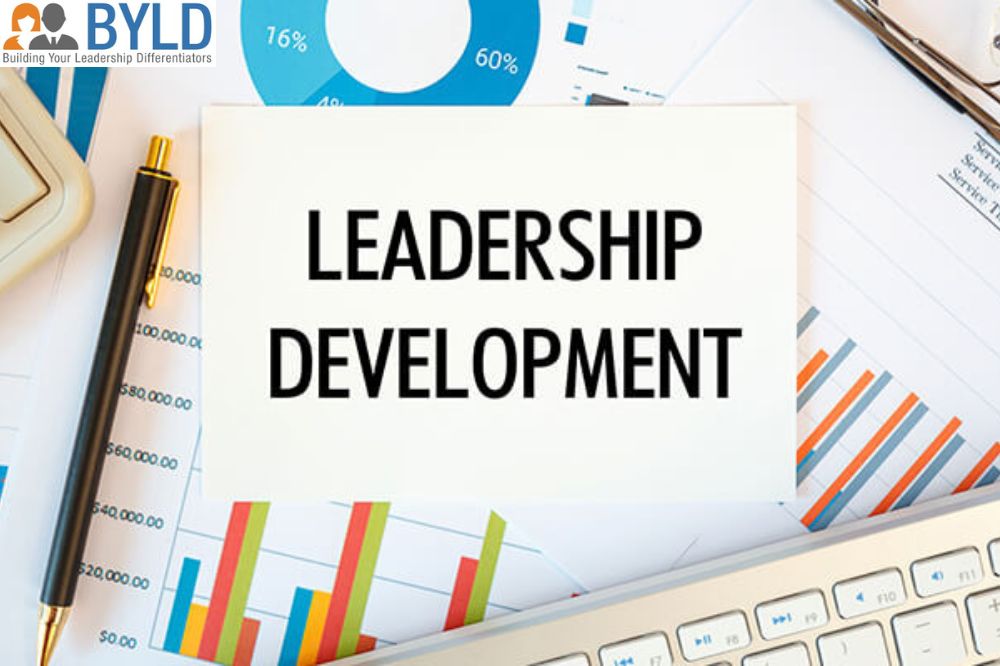Tech
The Role of DISC in Leadership Development
Published
3 months agoon
By
Syed Qasim
Leadership is a critical factor in the success of any organization. Effective leaders inspire, motivate, and guide their teams towards achieving common goals. However, leadership is not a one-size-fits-all skill; it requires an understanding of different personality types and the ability to adapt one’s style to meet the needs of diverse team members. This is where the DISC personality assessment comes into play. By providing insights into individual behavior and communication styles, DISC can be a powerful tool in leadership development. In this article, we’ll explore how DISC can enhance leadership effectiveness and contribute to the growth of both leaders and their teams.
Understanding DISC and Its Relevance to Leadership
The DISC assessment is a personality test that categorizes individuals into four primary personality types:
- Dominance (D): Direct, assertive, and results-oriented.
- Influence (I): Outgoing, enthusiastic, and persuasive.
- Steadiness (S): Calm, supportive, and patient.
- Conscientiousness (C): Analytical, detail-oriented, and methodical.
Each DISC profile represents different strengths, challenges, and communication preferences. For leaders, understanding these profiles is essential for effectively managing and motivating their teams. Leadership development programs that incorporate DISC can help leaders recognize their own behavioral tendencies and how these influence their leadership style.
1. Enhancing Self-Awareness
Self-awareness is the foundation of effective leadership. Leaders who understand their own DISC profile are better equipped to identify their strengths and areas for improvement. For example, a leader with a Dominance profile may excel in making quick decisions and driving results but may need to work on being more empathetic and collaborative. Conversely, a Steadiness leader may be excellent at building strong relationships but might need to develop assertiveness in decision-making.
- Example: A leader with an Influence profile might realize they have a tendency to focus on big-picture ideas while neglecting details. By becoming aware of this, they can take steps to ensure that important details are not overlooked in their planning and execution.
2. Adapting Leadership Styles to Different Team Members
One of the key challenges in leadership is managing a diverse team with varying personalities and work styles. DISC provides a framework for understanding these differences and adapting leadership styles accordingly. By recognizing the DISC profiles of their team members, leaders can tailor their approach to meet the unique needs of each individual.
- For Dominance (D) Team Members: Provide clear goals, autonomy, and opportunities for them to take charge of projects. Avoid micromanaging and allow them to make decisions.
- For Influence (I) Team Members: Encourage creativity and collaboration. Provide recognition and positive reinforcement, and involve them in team activities.
- For Steadiness (S) Team Members: Offer stability, support, and clear communication. Ensure they have a structured environment and time to adjust to changes.
- For Conscientiousness (C) Team Members: Provide detailed information and clear instructions. Allow time for analysis and avoid pressuring them to make hasty decisions.
By adapting their leadership style to the DISC profiles of their team members, leaders can improve communication, reduce misunderstandings, and create a more cohesive and productive work environment.
3. Improving Communication Skills
Effective communication is at the heart of good leadership. DISC helps leaders understand how different personality types prefer to communicate, enabling them to adjust their messaging and delivery to resonate with their audience.
- Example: A leader communicating with a Conscientiousness team member might focus on providing detailed explanations and data to support their points, while a conversation with an Influence team member might be more engaging and focused on the broader vision and goals.
Understanding these communication preferences can help leaders avoid potential conflicts, ensure clarity, and foster a more open and effective dialogue with their team members.
4. Conflict Resolution and Team Dynamics
Conflict is inevitable in any team, but how it is managed can significantly impact the overall dynamics and productivity of the group. DISC can play a crucial role in conflict resolution by helping leaders understand the underlying behavioral tendencies that may be contributing to the issue.
- Example: A conflict between a Dominance leader and a Steadiness team member might arise from differences in decision-making speed and approach. The Dominance leader may be pushing for quick decisions, while the Steadiness team member prefers a more thoughtful, measured approach. Understanding these differences through the lens of DISC can help the leader mediate the conflict more effectively, finding a solution that respects both perspectives.
By using DISC to understand the root causes of conflicts, leaders can develop strategies to resolve disputes in a way that strengthens relationships and improves team cohesion.
5. Developing Future Leaders
DISC is not only useful for current leaders but also plays a vital role in identifying and developing future leaders within the organization. By assessing the DISC profiles of employees, leaders can identify those with the potential to excel in leadership roles and tailor development programs to nurture their growth.
- Example: An employee with a natural Dominance profile may be identified as a potential leader for roles that require quick decision-making and strategic thinking. Similarly, an employee with an Influence profile might be groomed for leadership in roles that require strong communication and relationship-building skills.
By aligning leadership development programs with the DISC profiles of potential leaders, organizations can ensure that they are preparing the right individuals for the right roles.
6. Building a Balanced Leadership Team
A successful leadership team is often one that is balanced in terms of personality types and skills. DISC assessments can help organizations create leadership teams that complement each other, with diverse strengths that collectively cover all aspects of effective leadership.
- Example: A leadership team might include a Dominance leader to drive results, an Influence leader to inspire and communicate the vision, a Steadiness leader to support and nurture the team, and a Conscientiousness leader to ensure accuracy and quality.
By building a leadership team that reflects a balance of DISC profiles, organizations can ensure that all aspects of leadership are covered, from strategic decision-making to team support and communication.
Conclusion
The DISC assessment is a powerful tool in leadership development, offering valuable insights into individual behavior and communication styles. By enhancing self-awareness, adapting leadership styles, improving communication, resolving conflicts, and developing future leaders, DISC can significantly contribute to the effectiveness and success of leaders and their teams. Whether you’re a seasoned leader looking to refine your skills or an organization seeking to build a strong leadership team, incorporating DISC into your leadership development strategy can help you achieve your goals and drive organizational success.
Recent News


Instagram Story Viewer: Shaping Social Media!
Could you think of Instagram without stories? Even though Instagram Stories were introduced not so long ago, in 2016, they...


Top Benefits of Using a Phone Appending Platform for Batch Data Updates
In the world of data-driven marketing, having access to accurate and current contact information is essential for successful customer outreach....


3 Tips for Dressing Perfectly for Special Occasions
Dressing for special occasions can sometimes be a stressful and overwhelming process, especially for women. Whether you’re attending a wedding,...


Maximise Your Hunting Success with Dive Bomb Industries Decoys
When it comes to hunting, there’s no such thing as too much preparation. Hunters understand that the right equipment can...


Castle App Free Download — Updated 2024 Version
What is Castle App? Castle App, a stream app developed for streaming media content, makes entertainment effortless by giving clients...


How to get a duplicate RC book for your vehicle: A step-by-step guide
If you have lost or damaged your vehicle’s registration certificate, you must be tense and under stress. But getting a...


Enhancing Property Value Through Professional Builders Cleaning Services in the UK
Construction and renovation projects make a ton of residue, garbage, and soil, passing on a requirement for proficient cleaning to...


Saturn in Sidereal Pisces-March 28,2024 to February 21st 2028 by Jade Luna
I really wanted a female president governing this cycle but the chart of America would choose the hardest path, not...


Top 5 Super Clone Rolex for Women
Super clone Rolex watches are incredibly detailed knock-offs of popular Rolex models, crafted to look and feel just like the...


Transforming Dreams into Reality: A Success Story of Purchase Amazon Seller Account
Purchase Amazon Seller Account: In the fast-paced world of e-commerce, many aspiring entrepreneurs dream of starting their own business. However,...
